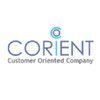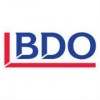Filter interviews by
Adroit Valuations Interview Questions, Process, and Tips
Adroit Valuations Interview Experiences
1 interview found

(5 Questions)
- Q1. What is valuation?
- Ans.
Valuation is the process of determining the worth of an asset or company.
Valuation involves analyzing various factors such as financial performance, market conditions, and future potential.
Common methods of valuation include discounted cash flow, comparable company analysis, and precedent transactions.
Valuation is important for making investment decisions, mergers and acquisitions, and financial reporting.
The value of ...
- Q2. It is the method to determine the present value of an asset
- Q3. Type of method used in valuation
- Ans.
Various methods can be used in valuation such as income approach, market approach, and asset-based approach.
Income approach: Based on the present value of expected future income or cash flows generated by the asset.
Market approach: Compares the asset to similar assets that have been sold recently in the market.
Asset-based approach: Values the asset based on its underlying assets and liabilities.
Cost approach: Determine...
- Q4. Market approch, cost approch, income approch
- Q5. What is obsolecence?
- Ans.
Obsolescence refers to the process of becoming outdated or no longer in use due to advancements in technology or changes in market demand.
Obsolescence can occur due to technological advancements making older products or systems obsolete.
It can also happen when there is a shift in consumer preferences or market demand for newer products.
Planned obsolescence is a strategy used by companies to intentionally make products ...
(2 Questions)
- Q1. Type of obsolecence?
- Ans.
There are three types of obsolescence: technological, functional, and economic.
Technological obsolescence occurs when a new technology makes the current one outdated.
Functional obsolescence happens when a product is no longer useful due to changes in consumer preferences or needs.
Economic obsolescence occurs when the cost of maintaining or using a product outweighs its benefits.
- Q2. What type of index used in valuation?
- Ans.
Commonly used indices in valuation include price-to-earnings ratio, price-to-book ratio, and discounted cash flow.
Price-to-earnings ratio (P/E ratio) compares a company's current share price to its earnings per share.
Price-to-book ratio compares a company's market value to its book value.
Discounted cash flow (DCF) estimates the value of an investment based on its future cash flows.
Interview Preparation Tips
Senior Technical Manager Interview Questions asked at other Companies
Interview questions from similar companies

I was interviewed in Dec 2024.
(5 Questions)
- Q1. CICD in current org?
- Ans.
Yes, CICD is implemented in the current organization.
CICD pipelines are set up to automate the build, test, and deployment processes.
Tools like Jenkins, GitLab CI/CD, or CircleCI are used for CICD.
Integration with version control systems like Git for triggering builds.
Automated testing is integrated into the pipeline for quality assurance.
Deployment to various environments like development, staging, and production is a
- Q2. Write terraform File
- Ans.
Creating a Terraform file for infrastructure provisioning
Define provider and required variables
Create resources like instances, networks, and storage
Use modules for reusable code
Implement variables and outputs for flexibility
Leverage Terraform state for tracking changes
- Q3. Challenges faced with Openshift Kuberenetes
- Ans.
Challenges faced with Openshift Kubernetes include complexity, resource management, and learning curve.
Complexity of managing multiple containers and pods
Resource management to ensure optimal performance and scalability
Learning curve for understanding Kubernetes concepts and best practices
- Q4. Migration from Openshift to Rancher?
- Ans.
Migration from Openshift to Rancher involves planning, testing, and executing the migration process.
Assess the current environment and applications running on Openshift
Plan the migration strategy including timelines, resources, and potential risks
Test the migration process in a non-production environment before executing in production
Execute the migration process in a phased approach to minimize downtime and impact on ...
- Q5. Terraform Statefile, Best Practices? If deleted how to recover?
(8 Questions)
- Q1. ELK Architecture in current Org?
- Ans.
ELK stack is used for log management in current organization.
ELK stands for Elasticsearch, Logstash, and Kibana.
Elasticsearch is used for indexing and searching logs.
Logstash is used for log collection, parsing, and transformation.
Kibana is used for visualization and analysis of logs.
- Q2. Data Load increase in ELK? how to handle?
- Ans.
To handle increased data load in ELK, consider scaling up hardware, optimizing queries, using index sharding, and implementing data retention policies.
Scale up hardware resources such as CPU, memory, and storage to handle increased data load.
Optimize queries to reduce the amount of data being processed and improve search performance.
Implement index sharding to distribute data across multiple nodes for better performanc...
- Q3. How to ensure HA in ELK?
- Ans.
To ensure HA in ELK, utilize multiple nodes, load balancers, and data replication.
Set up multiple Elasticsearch nodes in a cluster for redundancy
Use load balancers to distribute traffic evenly across nodes
Implement data replication to ensure data availability in case of node failure
- Q4. Terraform? Statefile?
- Q5. What is the approach for migrating from on-premises systems to AWS?
- Ans.
The approach for migrating from on-premises systems to AWS involves planning, assessment, migration, and optimization.
Conduct a thorough assessment of current on-premises systems and workloads to determine what can be migrated to AWS.
Create a detailed migration plan outlining the steps, timeline, resources, and potential challenges.
Utilize AWS Migration Hub to track the progress of the migration and ensure a smooth tra...
- Q6. What are the biggest challenges you have faced, and how did you overcome them?
- Ans.
One of the biggest challenges I faced was managing a complex deployment process with multiple dependencies.
Identifying bottlenecks in the deployment process and streamlining them
Implementing automation tools to reduce manual errors and save time
Collaborating with different teams to ensure smooth coordination and communication
- Q7. What are the key considerations for security in architecture?
- Ans.
Key considerations for security in architecture include network security, data encryption, access control, and monitoring.
Implement network security measures such as firewalls, VPNs, and intrusion detection systems to protect against external threats.
Utilize data encryption techniques like SSL/TLS to secure data in transit and at rest.
Implement access control mechanisms to ensure that only authorized users have access ...
- Q8. How do you obtain your work assignments, and who is responsible for assigning them?
- Ans.
Work assignments are obtained through a combination of team meetings, project management tools, and direct communication with team leads or managers.
Work assignments are often discussed during team meetings where priorities and tasks are allocated.
Project management tools such as Jira or Trello may be used to assign and track work assignments.
Direct communication with team leads or managers can also result in work assi...
(2 Questions)
- Q1. What are your strengths and weaknesses?
- Ans.
My strengths include strong problem-solving skills and attention to detail. My weaknesses include a tendency to overthink and a lack of experience in certain technologies.
Strengths: strong problem-solving skills
Strengths: attention to detail
Weaknesses: tendency to overthink
Weaknesses: lack of experience in certain technologies
- Q2. If you receive another job offer, would you still consider joining our organization?
- Ans.
I would consider all factors before making a decision.
I would evaluate the new job offer in comparison to the opportunities and benefits offered by your organization.
I would consider the long-term growth potential, company culture, work-life balance, and overall fit with the team.
Ultimately, my decision would be based on which opportunity aligns best with my career goals and values.

Business Development Manager Interview Questions & Answers
AccSource KPOposted on 12 Feb 2025
I was interviewed in Jan 2025.
(1 Question)
- Q1. What you know about Account Outsourcing?
Interview Preparation Tips
The first round took nearly 2 weeks with multiple reschedules (on a daily basis) from their end. The first round was HR round with some basic industry and Job profile relevant question; though, the strange thing was that the interview was supposed to happen on MS Teams, which was rescheduled on Phone Call with the reason being that the MS Team was corrupted on their end.
The second & final round was with their Managers, again it was rescheduled twice.
Anyways, the Job Description / Profile was of Business Development Manager, and I possess 15+ years of relevant experience on the same. However, I was been asked by their Manager to lower my profile expectations, and was asked to work as a Telemarketer / Cold Calling - stating that in their org., the profile of BDM was to make calls only, where they will provide me with a data set of 500 calls each week and I've to make calls on them. This revelation took me by surprise as the original shared JD was something different entirely (more relevant to my profile), and on call they did a 360 turn asking me to play a role of Fresher / Jr. BDE / Telemarketer. I understand and agree that cold calling could be a part of BDM Profile, but solely Cold Calling is never a part of the BDM profile, especially in Service / Outsourcing Industry.
Additionally, despite me being on 300Mbps Fiber connection and ensuring that no bandwith was utilised apart from the final interview round, as well as despite changing multiple headset and finally using my laptop speaker, and on top of that despite getting on MS Team's call on almost weekly basis (as part of my existing job profile back then); his manager complaint stating that my internet connection is not proper and thus he was unable to listen me correctly, adding that I'm using Mobile Data. In a nutshell, instead of fixing things on their end, they blame the candidate.
Considering the overall bad experience, false initial commitment (i.e., JD stating different and different approach of JD on interview), as well as other bizzare incidents; I strongly suggest to avoid approaching Accsource. Imagine if the interview experience was such bad, how the actual working condition could be.

Senior Analyst Interview Questions & Answers
Corient Business Solutionsposted on 7 Feb 2025
I was interviewed in Jan 2025.
(1 Question)
- Q1. Everything about your experience
Interview Preparation Tips
Review: My experience with this organization was extremely disappointing. The interview process was misleading, where they initially offered a higher package but later reduced it significantly. This has happened to me twice with them, leading to a complete waste of time and a demotivating experience. I would not recommend this company to serious job seekers.

I applied via Naukri.com and was interviewed in Jul 2024. There were 3 interview rounds.
This test is an offline assessment covering math, logical reasoning, and English grammar. However, it holds less importance as HR will primarily focus on your process-related work experience, communication skills, knowledge about the company, and understanding of the process, especially if you are a fresher.
(6 Questions)
- Q1. Tell me about yourself.
- Q2. Tell me in brief about your work experience.
- Q3. When did you leave your previous organization and why?
- Q4. Are you an immediate joiner or what is your notice period?
- Q5. Do you know about cogneesol?
- Q6. I will shortlisted you for the next round wait for it, or take a break.
(3 Questions)
- Q1. He/she will look at your resume and ask about your salary expectations.
- Q2. Show me your last salary slip or appraisal letter.
- Q3. We will provide your "XX" amount per month where "X" will be fixed and "Y" will be your NSA and incentives. If you are ready we will provide you an offer letter immediately.
Interview Preparation Tips
When the manager arrived at 4 clocks, they conducted interviews in the same place reviewed resumes, and emphasized that, as an ISO-certified company, they don't entertain candidates who are only interested in getting an offer letter. They asked for salary slips and explained that the salary structure includes a fixed component (basic salary plus HRA), with the rest considered as allowances. They offered a minimal hike of 1,000 to 2000 INR on your fixed salary. If you agreed, they would connect you with HR for documentation. However, 99% of experienced candidates declined the offer because no one wanted to reduce their value in terms of CTC.
I had a terrible interview experience with this unprofessional and disrespectful company. I strongly advise against attending an interview there as it will likely be a negative experience. Only consider it as a last resort if you are facing extreme rejection and poor conditions. Moreover, they don't offer more than a 3% hike in future appraisals.

• participate actively
• listen to
• Interact with each other with respect
• Try to reach a compromise or decision together
• Keep your words clear
• Respect different opinions
Interview Preparation Tips
process. Improvement. Successful in managing supply chain operations and contributing to
revenue-producing activities.Manage Finished Goods Inventory and manage warehouse.
□ Warehouse operations, Inventory control, Logistics & Distribution, Transportation services.
□ Always identify low turn stock and trace stock levels.
□ Handling Despatch related all Activities effectively supply chain strategies, improving on-time
delivery performance.
□ Coordinate & follow with all Transporter related to Transport Bill’s freight forwarding,
□ Handle Export / Domestics Despatched related activities.
□ Coordinate & follow with the all Transporter related to Transport Bill’s freight forwarding

Senior Process Associate Interview Questions & Answers
Auditics Private Limitedposted on 10 Dec 2024
(1 Question)
- Q1. Past company experience
- Ans.
I have 5 years of experience working as a Process Associate at a multinational company.
Managed and optimized various processes to improve efficiency
Collaborated with cross-functional teams to implement new strategies
Analyzed data and generated reports for management review
Trained new employees on company processes and procedures
(2 Questions)
- Q1. Core related experience and skills
- Q2. Accounting tools ?
(1 Question)
- Q1. Salary discussion
Interview Preparation Tips

Questionare needs to be filled within 1 hour
(2 Questions)
- Q1. Managerial Round
- Q2. Intro, Steps to make an impact on given position, why did u leave previous Org
(2 Questions)
- Q1. Tell me something about yourself
- Q2. Brief about your previous Org
- Ans.
I worked at a retail company specializing in home goods.
Managed a team of 10 sales associates
Implemented new sales strategies to increase revenue by 15%
Handled customer complaints and resolved issues effectively
Interview Preparation Tips

I applied via Walk-in and was interviewed in Jul 2024. There was 1 interview round.
(5 Questions)
- Q1. Tell me about yourself?
- Ans.
I am a detail-oriented and analytical individual with a strong background in accounting and auditing.
Graduated with a degree in Accounting
Completed internships at accounting firms
Strong understanding of auditing principles
Proficient in financial analysis and reporting
- Q2. Ind As related questions and entire CV based questions
- Q3. WHAT IS MATERIALITY?
- Ans.
Materiality is the concept of determining the significance or importance of an item or event in relation to the financial statements.
Materiality helps auditors decide what information to focus on during an audit
It is based on the size, nature, and circumstances of an item or event
Materiality is subjective and can vary depending on the context
Examples include large dollar amounts, significant errors, and key transaction
- Q4. HOW TO CALCULATE MATERIALITY?
- Ans.
Materiality is calculated based on factors like size, nature, and risk of the financial statements.
Determine the base amount for materiality (e.g. total assets, total revenue)
Apply a percentage to the base amount to calculate materiality threshold (e.g. 5% of total assets)
Consider qualitative factors like the nature of the entity, industry regulations, and potential impact on users of the financial statements
Adjust mat...
- Q5. HOW TO DO AUDIT OF COMPANY?
- Ans.
Audit of a company involves examining financial records, internal controls, and compliance with regulations.
Understand the company's business operations and industry standards
Review financial statements and supporting documents
Assess internal controls and identify any weaknesses
Test transactions for accuracy and completeness
Ensure compliance with laws and regulations
Prepare audit reports with findings and recommendatio
Interview Preparation Tips
- IND AS
- STANDARDS ON AUDITING
Article Assistant Interview Questions & Answers
Ahuja Valecha & Associatesposted on 14 Aug 2024
I applied via Referral and was interviewed in Jul 2024. There was 1 interview round.
(5 Questions)
- Q1. What do you know about International tax?
- Ans.
International tax refers to the taxation of income in multiple countries, often involving complex rules and regulations.
International tax involves determining how much tax a person or company owes in different countries based on their income and activities.
It can be influenced by tax treaties between countries, transfer pricing rules, and foreign tax credits.
Multinational corporations often face challenges in complying...
- Q2. What is Transfer Pricing?
- Ans.
Transfer pricing is the setting of prices for goods and services sold between related entities within an organization.
Transfer pricing is used to determine the cost of goods and services transferred between different divisions or subsidiaries of a company.
It helps in allocating profits and costs appropriately among different parts of the organization.
Transfer pricing is important for tax purposes to ensure that transac...
- Q3. Why was transfer Pricing introduced?
- Ans.
Transfer pricing was introduced to prevent tax evasion and ensure fair pricing between related entities.
To prevent tax evasion by multinational companies
To ensure fair pricing between related entities
To prevent profit shifting to low-tax jurisdictions
To comply with international tax regulations such as OECD guidelines
- Q4. Recent finance amendments (budgets)
- Ans.
Recent finance amendments in budgets impact financial regulations and policies.
Introduction of new tax laws or changes in existing tax rates
Updates on government spending priorities and allocations
Revisions to financial reporting standards
Changes in import/export duties or tariffs
Introduction of stimulus packages or economic relief measures
- Q5. Current affairs
Adroit Valuations Interview FAQs
Tell us how to improve this page.
Interview Questions for Popular Designations
Adroit Valuations Interview Process
based on 2 interviews
Interview experience
Interview Questions from Similar Companies
Adroit Valuations Reviews and Ratings
based on 16 reviews
Rating in categories
|
Technical Manager
12
salaries
| ₹2.9 L/yr - ₹6 L/yr |
|
Valuation Analyst
7
salaries
| ₹2.7 L/yr - ₹5.5 L/yr |
|
Technical Engineer
5
salaries
| ₹1.8 L/yr - ₹3.2 L/yr |
|
Financial Analyst
4
salaries
| ₹2.5 L/yr - ₹3.9 L/yr |
|
Manager
4
salaries
| ₹4.3 L/yr - ₹12 L/yr |

Duff & Phelps

Ernst & Young

KPMG India

Deloitte
- Home >
- Interviews >
- Adroit Valuations Interview Questions
















